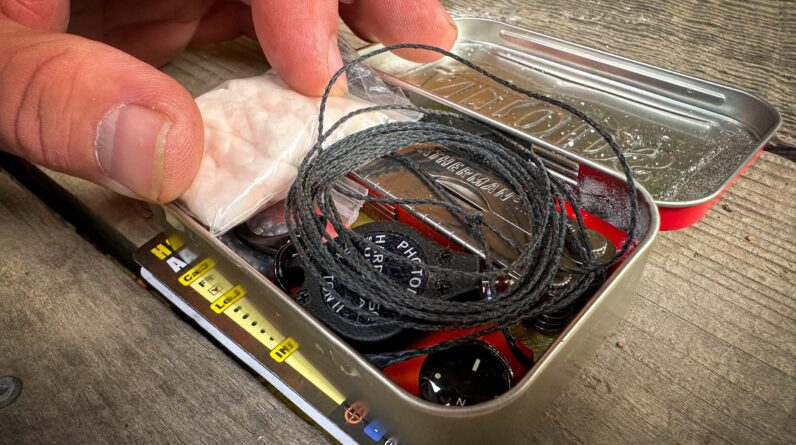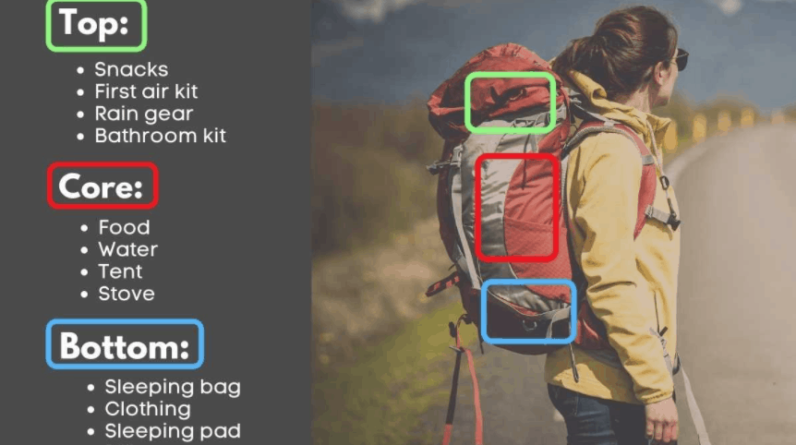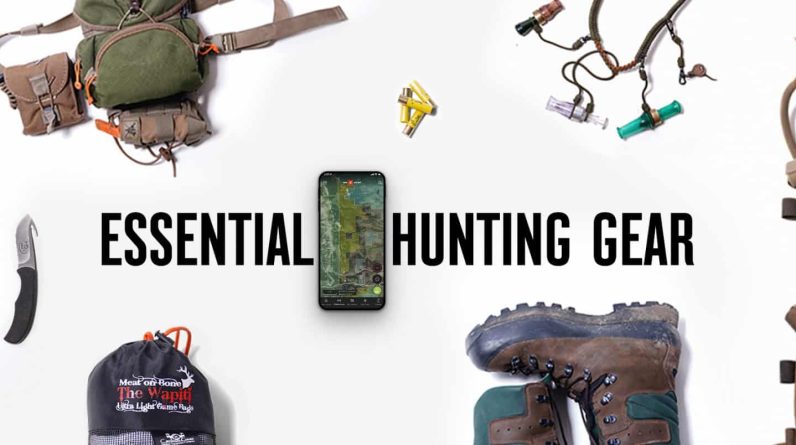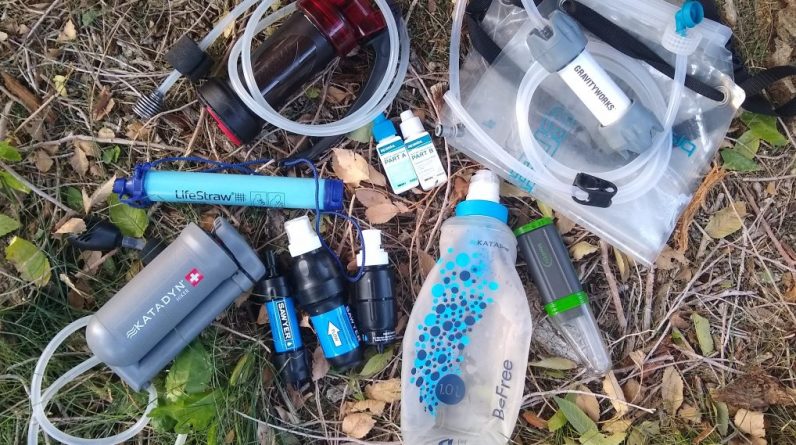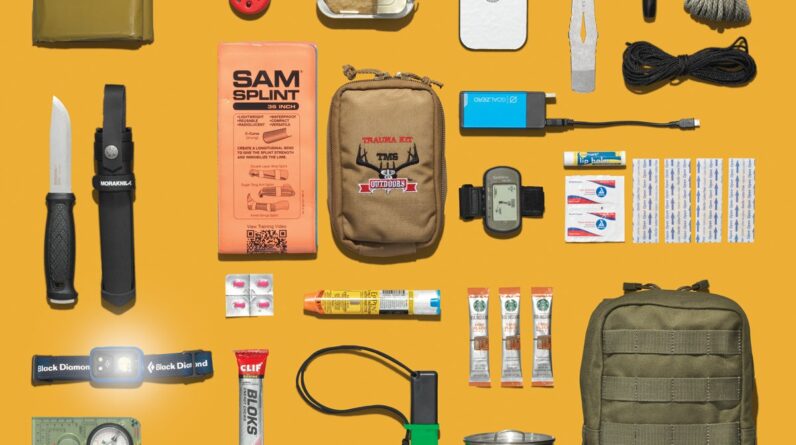
In your quest to conquer the untamed wilderness, having the right supplies and gear by your side is crucial. Imagine navigating through dense forests, braving harsh terrains, and coping with unpredictable weather conditions armed with only the bare minimum. Don’t worry, we’ve got your back. In this article, we’ll be covering the must-have tools and equipment that will equip you to survive and thrive in the wild. From versatile multitools to sturdy tents, we’ll explore the world of survival gear, ensuring you’re prepared for anything that nature throws your way. So buckle up and get ready to embark on an unforgettable adventure!
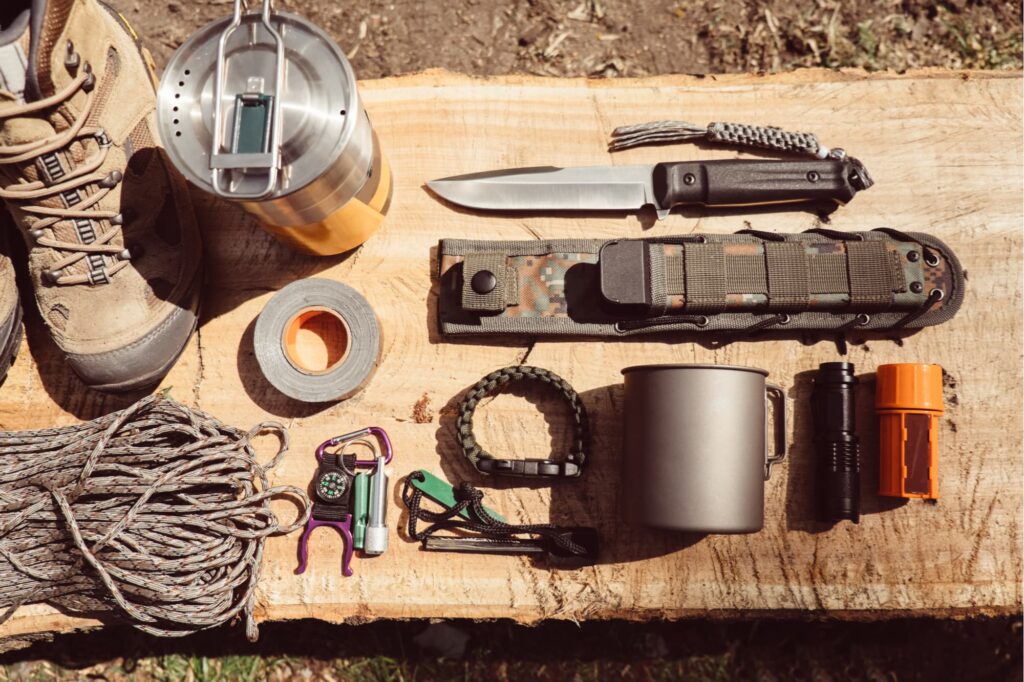
This image is property of blog-assets.thedyrt.com.
Navigation and Signaling
Compass
A compass is an essential tool for navigating in the wilderness. It helps you determine the direction you are facing and can be used to navigate through unfamiliar terrain. By using a compass, you can easily orient yourself and find your way back to camp or to a desired location.
Map
A map is another crucial item for wilderness survival. It provides an overview of the area you are exploring and allows you to plan your route accordingly. Maps contain valuable information such as topography, trails, and landmarks that can help you stay on track and avoid getting lost.
Signal mirror
A signal mirror is a simple yet effective tool for signaling for help in an emergency situation. It can reflect sunlight and create a visible flash that can be seen from afar. This is particularly useful if you are stranded or lost and need to attract the attention of rescue teams or other people in the vicinity.
Whistle
A whistle is a small and lightweight signaling device that can be heard over long distances. It is an important tool to have in case you need to alert others of your presence or indicate an emergency situation. A sharp blast on a whistle can attract attention and potentially save your life.
GPS device
While traditional navigation tools like a compass and map are essential, a GPS device can provide an additional level of accuracy and convenience. It uses satellite technology to determine your exact location, making it easier to navigate and track your progress. A GPS device can be especially useful in unfamiliar or remote areas where landmarks may be scarce.
Shelter and Sleeping
Tent or tarp
A tent or tarp is crucial for providing shelter and protection against the elements. It acts as a barrier between you and the outside world, shielding you from rain, wind, and insects. When choosing a tent or tarp, consider its weight, size, and durability to ensure it suits your needs and the climate of your intended destination.
Sleeping bag
A high-quality sleeping bag is essential for staying warm and comfortable during the night. It traps your body heat and insulates you from the cold ground, allowing you to get a good night’s sleep even in challenging conditions. Look for a sleeping bag that is suitable for the temperature range you will be camping in.
Sleeping pad
A sleeping pad provides insulation and cushioning, enhancing your comfort while sleeping. It creates a barrier between you and the ground, preventing heat loss and minimizing discomfort from uneven terrain. Choose a sleeping pad that is lightweight, durable, and easy to pack.
Emergency blanket
An emergency blanket, also known as a space blanket, is a lightweight and compact item that can be a lifesaver in cold weather conditions. It reflects your body heat back to you and helps retain warmth, preventing hypothermia. Keep one in your survival kit as a backup for added protection during emergencies.

This image is property of www.fieldandstream.com.
Fire Starting
Lighter
A lighter is a convenient and reliable tool for starting a fire in the wilderness. It produces a flame that can ignite tinder, such as dry leaves or small twigs. Opt for a windproof lighter that works well in various weather conditions.
Waterproof matches
Waterproof matches are an essential backup fire-starting tool. They are designed to withstand moisture, making them reliable in wet and humid environments. Ensure you keep them in a waterproof container for added protection.
Ferrocerium rod
A ferrocerium rod, often called a firesteel, is a compact and durable tool used to create sparks for fire starting. By striking a hard object against the rod, you can produce sparks that can easily catch fire. This is a valuable tool to have as it works in different weather conditions and can be used repeatedly.
Firestarter
A reliable firestarter, such as fire gel or fire cubes, can make fire starting much easier, especially in challenging conditions. These products are designed to burn longer and hotter than traditional kindling, making it easier to ignite larger pieces of wood.
Water and Hydration
Water bottles
Having a sufficient supply of water is crucial for wilderness survival. Carry durable, reusable water bottles to ensure you have access to clean drinking water at all times. Look for bottles that are lightweight and have a secure lid to prevent leaks.
Water purification tablets
Water purification tablets are essential for treating water from natural sources such as rivers, lakes, or streams. They help eliminate harmful bacteria, viruses, and parasites that can cause waterborne illnesses. Ensure you follow the instructions provided with the tablets for safe and effective use.
Water filter
A water filter is another reliable method to ensure access to clean drinking water. It removes sediments, chemicals, and microorganisms from natural water sources, making it safe for consumption. Look for lightweight and compact filters that are easy to use and maintain.
Collapsible water container
A collapsible water container is a practical and space-saving item to carry. It allows you to collect and store a larger quantity of water when a natural water source is available. When empty, it can be folded or rolled up to occupy minimal space in your backpack.

This image is property of www.wildernesscollege.com.
Food and Cooking
Non-perishable food
Non-perishable food items, such as energy bars, trail mix, and canned goods, are essential for sustaining your energy levels during survival situations. Choose lightweight and nutrient-dense options that do not require refrigeration. These items can be easily stored and provide a quick source of energy when needed.
Camping stove
A camping stove is a reliable cooking tool for preparing hot meals and boiling water. Opt for compact and lightweight stoves that use fuel efficiently and are easy to assemble and operate. Remember to carry an appropriate fuel source as well.
Cookware set
A compact and durable cookware set is essential for cooking meals in the wilderness. Look for sets that include a pot, a pan, and utensils. Choose materials that are lightweight but resistant to high temperatures, such as titanium or aluminum.
Eating utensils
Carry lightweight and durable eating utensils such as a spoon, fork, and knife. These tools allow you to enjoy your meals comfortably while minimizing waste. Consider utensils that are designed to be compact and can be easily stored in your backpack.
First Aid and Medical
First aid kit
A comprehensive first aid kit is a must-have for wilderness survival. It should include essential items such as bandages, gauze pads, adhesive tape, antiseptic wipes, and pain relievers. Additionally, consider including items specific to your medical needs, such as prescription medications or personal emergency medications.
Medications
If you have any pre-existing medical conditions, it is vital to carry an ample supply of your prescribed medications. Ensure they are stored properly and clearly labeled. It is also a good idea to consult with your healthcare provider to determine if any additional medications or supplies are necessary for your specific needs.
Antiseptic wipes
Antiseptic wipes are crucial for cleaning wounds or disinfecting surfaces. They help prevent infection in case of injuries and can be used to maintain personal hygiene. Carry a sufficient number of antiseptic wipes in your first aid kit for quick and effective cleaning.
Tweezers
Tweezers are an essential tool for removing splinters, thorns, or ticks from your skin. Carry a pair of fine-point tweezers that are specifically designed for medical use. They can also be useful for other purposes such as repairing gear or handling small objects.
Emergency whistle
An emergency whistle serves dual purposes of signaling for help and alerting others to your presence. It is a compact and lightweight tool that can be heard over long distances. Keep it easily accessible, either attached to your backpack or worn around your neck.
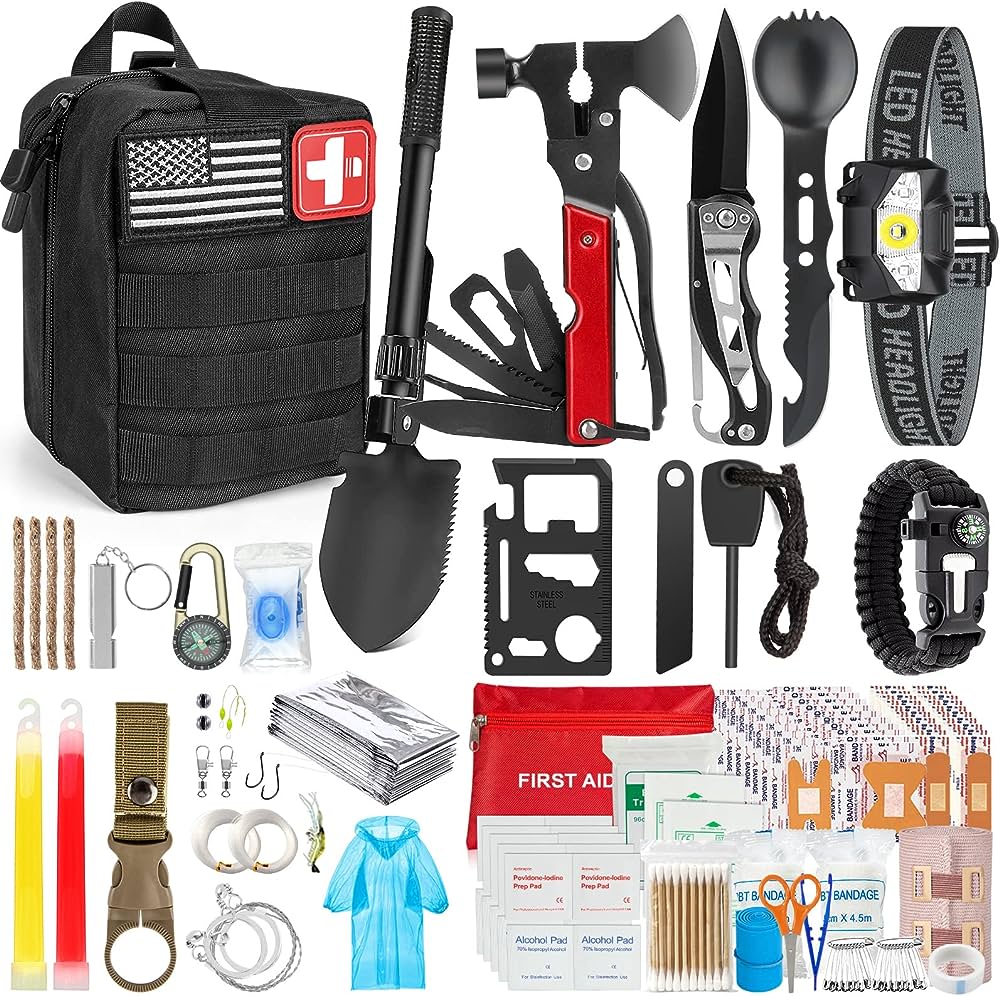
This image is property of Amazon.com.
Tools and Repair
Knife
A high-quality knife is a versatile and invaluable tool for wilderness survival. It can be used for various tasks such as preparing food, building shelter, and processing wood. Choose a knife with a sturdy blade, a comfortable grip, and a sheath for safe storage.
Multi-tool
A multi-tool combines multiple essential tools into one compact device, making it a valuable addition to your survival kit. It typically includes pliers, a knife, screwdrivers, a can opener, and more. Look for a durable and reliable multi-tool that suits your specific needs.
Duct tape
Duct tape is a versatile item that can be used for a wide range of purposes in an emergency situation. It can be used to repair gear, create makeshift shelters, or secure bandages. Carry a small roll of duct tape in your survival kit for quick fixes and temporary solutions.
Paracord
Paracord, also known as parachute cord, is a durable and lightweight cord that has numerous uses in the wilderness. It can be used to create shelter, secure gear, or fashion tools and traps. Look for paracord that has a high tensile strength and is easy to unravel.
Sewing kit
A sewing kit allows you to repair torn clothing or gear, ensuring their longevity and functionality. It should include needles, threads of various colors, and small scissors. Carry a compact sewing kit that fits easily into your backpack for quick and convenient repairs.
Safety and Protection
Headlamp or flashlight
A headlamp or flashlight is an essential item for navigating and operating in low-light conditions. It provides hands-free illumination and allows you to see and be seen during nighttime activities or emergencies. Opt for a lightweight and durable model that offers adjustable brightness settings.
Extra batteries
Carry extra batteries for your headlamp or flashlight to ensure a continuous and reliable source of light. Check the battery compatibility and ensure they are stored securely to prevent discharge or damage.
Sunscreen
Protection from the sun’s harmful rays is crucial during outdoor activities. Sunscreen with a high SPF factor should be applied to exposed skin to prevent sunburn and reduce the risk of skin damage. Choose a sunscreen that is water-resistant and provides broad-spectrum protection.
Bug repellent
Insect bites can be not only annoying but also potentially dangerous as they may transmit diseases. Apply a bug repellent to exposed skin to ward off mosquitoes, ticks, and other biting insects. Look for repellents that contain DEET or other recommended active ingredients.
Emergency poncho
An emergency poncho provides protection against rain or unexpected weather changes. It is lightweight, compact, and easy to store in your backpack. Having this item readily available ensures that you can stay dry and warm during adverse weather conditions.
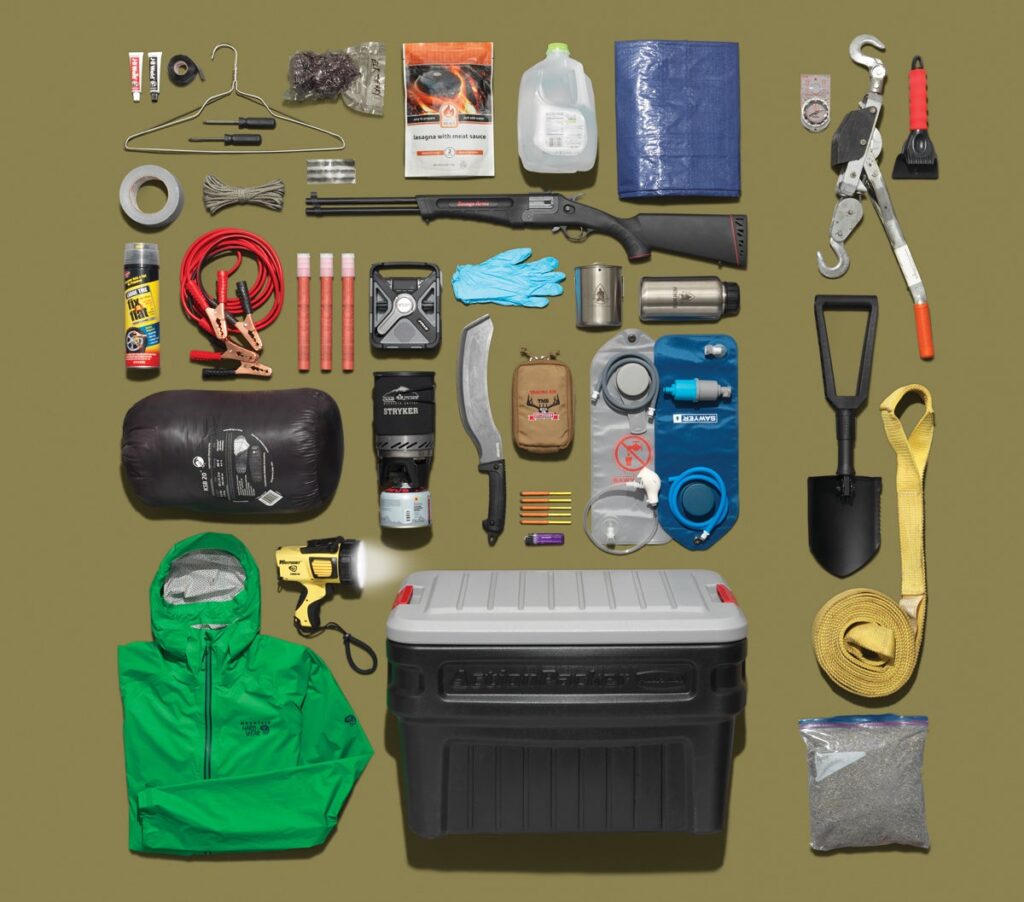
This image is property of www.fieldandstream.com.
Clothing and Footwear
Layered clothing
Layered clothing is essential for adjusting to various weather conditions. It allows you to add or remove layers as needed to manage your body temperature efficiently. Choose moisture-wicking base layers, insulating mid-layers, and weather-resistant outer layers for optimal comfort and protection.
Sturdy boots
Sturdy and comfortable boots are essential for wilderness survival. They provide support, stability, and protection for your feet, especially when traversing uneven terrain or encountering obstacles. Look for boots that are waterproof, breathable, and offer excellent traction.
Hat
Wearing a hat protects your head and face from the sun’s rays. Choose a hat with a wide brim or a cap with a neck flap for maximum sun protection. Additionally, a hat can help provide some insulation during cold weather.
Gloves
A pair of gloves is essential for protecting your hands from the elements and potential injuries. Choose gloves that are suitable for the climate and the activities you’ll be engaged in. Look for durable, waterproof, and insulated gloves that allow for dexterity.
Personal and Sanitation
Toilet paper
Toilet paper is a necessity for maintaining personal hygiene in the wilderness. Carry a small and lightweight roll in a waterproof container or sealable plastic bag. Remember to practice Leave No Trace principles and dispose of used toilet paper properly.
Hand sanitizer
Hand sanitizer is crucial for maintaining proper hand hygiene when soap and water are not readily available. It helps to kill germs and prevent the spread of bacteria. Carry a small bottle of hand sanitizer in your backpack and use it before meals or after using the restroom.
Biodegradable soap
Biodegradable soap is an eco-friendly option for cleaning utensils, cookware, or your body while in the wilderness. It is designed to break down naturally without harming the environment. Use biodegradable soap sparingly and dispose of wastewater properly to minimize your impact on nature.
Trash bags
Carry a few lightweight and durable trash bags to pack out any waste generated during your journey. Proper waste management is crucial for preserving the environment and minimizing your impact on the wilderness. Always leave nature better than you found it by practicing Leave No Trace principles.
In conclusion, a well-equipped survival kit should contain a range of essential tools and equipment to ensure your safety and comfort in the wilderness. From navigation and signaling devices to shelter and sleeping essentials, fire-starting tools, water and hydration supplies, food and cooking utensils, first aid and medical items, versatile tools and repair materials, safety and protection gear, appropriate clothing and footwear, to personal and sanitation items, each category plays a significant role in your ability to survive and thrive in the wild. Remember to choose high-quality, durable, and reliable gear that suits your needs and the specific conditions of your outdoor adventure. With the right equipment, knowledge, and preparation, you can confidently face the challenges and enjoy the wonders of the natural world. Stay safe, have fun, and embrace the wilderness!

